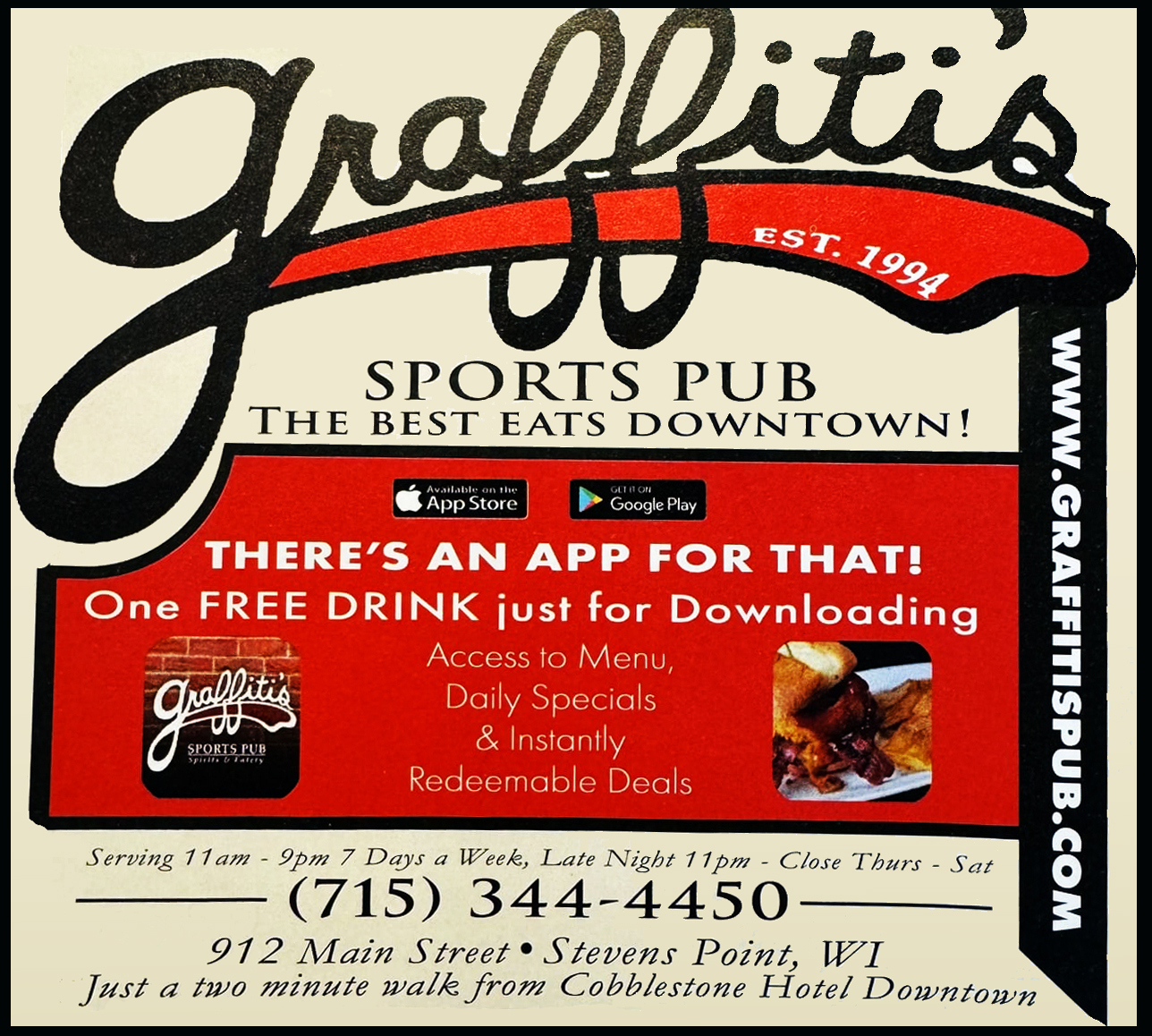Point/Counterpoint: Stanley Street
Alderman: Re-striping Stanley best solution
To the Editor-
It’s been about 18 months since my last column about the proposal to redraw the lanes of Stanley Street to have three lanes for drivers and two for bike riders, which I strongly support.
While my initial idea of prioritizing this project for the 2017 capital budget was too rushed of a time-frame, a year and a half of robust public debate has made the issue ripe for decision. So I would like to offer a closing argument.
In a nutshell, the current outdated four-lane style of roadway running right through town is going the way of the dinosaur. Cities are realizing it doesn’t help the life of a community when streets are tailored for letting cars zip through neighborhoods and business districts as quickly as possible.
To have a vibrant neighborhood, it’s better to have streets where drivers, bike riders, and people on foot all feel safe. For local shops and restaurants, the key point is that people always spend more money the slower they go—when they walk down the street rather than whizzing by.
In all the months of debate, many points came up that deserve response:
- The Stanley Street proposal has supporters as well as opponents.
My personal rule as a politician is never to make claims about what “the people” want or think on a debated issue. Absent extensive and expensive opinion polls, the most that can be said is that opinion is split. Some issues on our City Council agenda offer a chance to find consensus, but except for a possible compromise on how far the re-striping would extend, Stanley St. is not one of those consensus-building opportunities. So we can only say there are residents and businesses in support as well as opposition to the proposal.
- Three lanes leave ample room for emergency vehicles.
Even before public debate got underway, the police and fire departments confirmed that—just as in other communities—the redesign posed no obstacle for their vital work. Do opponents raising this question really think we’d even be considering the change if this weren’t so?
- Three lanes of auto traffic will be safer than four.
Time and again this type of 4-to-3 lane conversion has been shown to calm traffic and reduce crashes. They remove the danger that cars going the same direction will sideswipe each other, and there are fewer rear-end collisions when cars pull into the middle lane for left turns. But the most important safety issue for me involves bike riders. When opponents say that bikes should go on the sidewalks, they are flying in the face of everything we know about safety—as the SPPD’s former community officer reminded us at the September 2016 public meeting.
Despite some residents dramatic comments about cleaning blood off their curb, they should really worry about backing out of their drive and hitting a bike rider who’s coming down the sidewalk. It’s a matter of needing a better angle to see them coming, which is exactly what the manager of GT Mobility worries about in his driveway.
- This proposal is about people walking and local businesses just as much as people on bikes.
To an extent, the 4-to-3 conversion is about giving Stevens Point a better road network for those who ride bikes as their transportation. We’re not in a position to rest on our laurels as a bike-friendly community. The League of American Bicyclists rating of Stevens Point highlighted the major gaps in our bicycle routes.
But the redesign is safer for pedestrians too—for instance by getting bikes off the sidewalks to make them safer to walk on. One 2nd District constituent who grew up in our neighborhood also remembers crossing Stanley very easily and now says she never crosses it with her own kids.
With the new layout, she could to use the middle turning lane as a pedestrian island to cross halfway at a time.
Equally important, the sidewalks will be more appealing once bike lanes become a buffer between pedestrians and car traffic—helping draw more customers to local businesses.
So then what is the main disagreement about the Stanley St. proposal? It boils down to whether you believe our city streets should be tailored solely for the benefit of car drivers.
For instance, I’ve heard opponents mention the reduced use of bikes during Wisconsin winters. Based on that argument, we shouldn’t build baseball diamonds or any other sports fields because they aren’t year-round either.
Even more relevant is the question I heard recently about commuters who drive to work at Sentry or the hospital. These employers are vital to our local economy, something our council always keeps sight of. But if the choice is between a minute or two of extra commuting time versus more livable neighborhoods, I’ll pick the latter every time.
Alderperson David Shorr lives in Goerke Park Neighborhood and represents District 2. He is running for re-election in April unopposed.
Business owner opposed to re-striping
To the Editor-
As a business owner located on Stanley St. for over 15 years, I feel compelled to respond to Alderperson David Shorr’s open letter.
In September of 2016, many along Stanley St. were invited to a meeting which was presented as a “city informational meeting” regarding the proposed Stanley St re-striping/reduction to three lanes/adding bike lanes. As it was found out later, while presented by several city officials/employees, it was not a city sanctioned meeting, but rather presented by the “Bike Brigade”.
After the meeting was complete, I personally asked Alderperson Jennings if a recent vehicle/bicycle traffic count had been done. Her response was to the effect “not recently, but we are going to do one real soon.” Essentially the proposal had come forth to narrow Stanley St without any traffic count facts. Despite what Ald. Shorr states, the majority in attendance were against the conversion.
In October of 2016, a true city sponsored meeting was held. It was presented that the Stanley St. vehicle count was approximately 12,000 vehicles per day. I do not recall what the bicycle count was, but am guessing it was less that 20 bicycles per day. Again, the majority of those in attendance were against the conversion.
In August of 2017, Ald. Shorr held a “listening session” at the Rec Center. The ideal had shifted to a safety issue as its main focus. The majority of those in attendance were against the conversion. Ald. Shorr may have “listened” but he didn’t “hear.”
After the meeting I requested facts from Ald. Shorr about vehicle/vehicle, vehicle/bicycle and vehicle/pedestrian accidents on Stanley St.
He did not provide them to me, but rather said “studies show that conversions improve safety.”
I was able to obtain the facts from Ald. Shaun Morrow (District 10) who got them directly from the police department. In a two-year time frame there were 17 vehicle/vehicle, one vehicle/bicycle and one vehicle/pedestrian accidents reported to the police department. Hardly a raving safety issue when facts are presented.
In a city meeting in December of 2017, the majority of those in attendance were against a Stanley St. conversion.
A continuing theme is that increased bike traffic while pay dividends to Stanley St. business owners. I would venture to guess that an auto repair shop, a funeral home, a laundromat, a construction company, a trailer sales and service company a bar, and a liquor store would not see increased business due to more bicycle traffic. I personally have had one bicycle client in 15 years.
While speed can be a problem on Stanley St., several alderpersons feel that the only solution is conversion and bike lanes; no other low cost options are even considered. Flashing “your speed is” signs work; flashing pedestrian crossing signs (Maria Drive by the UWSP power plant) work; police presence works.
Please contact your alderperson and state you opposition to a Stanley St. conversion.
David J. Wysocki
Stevens Point


